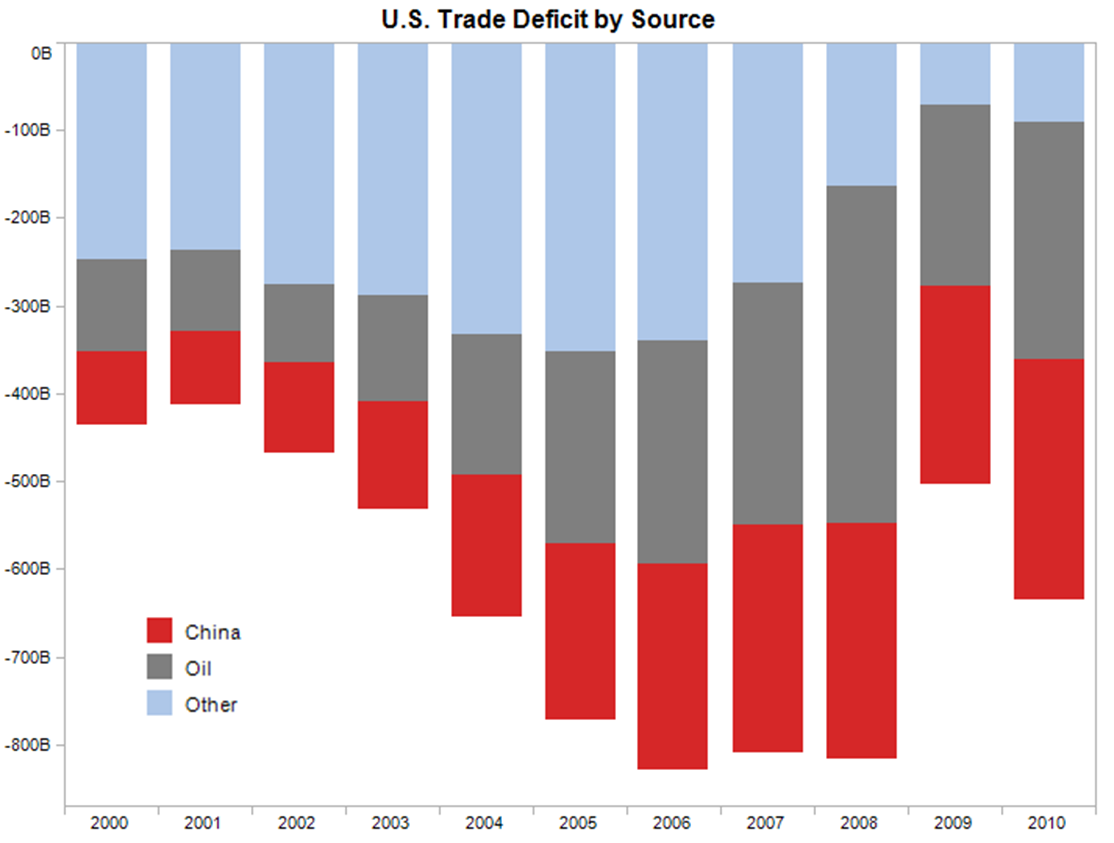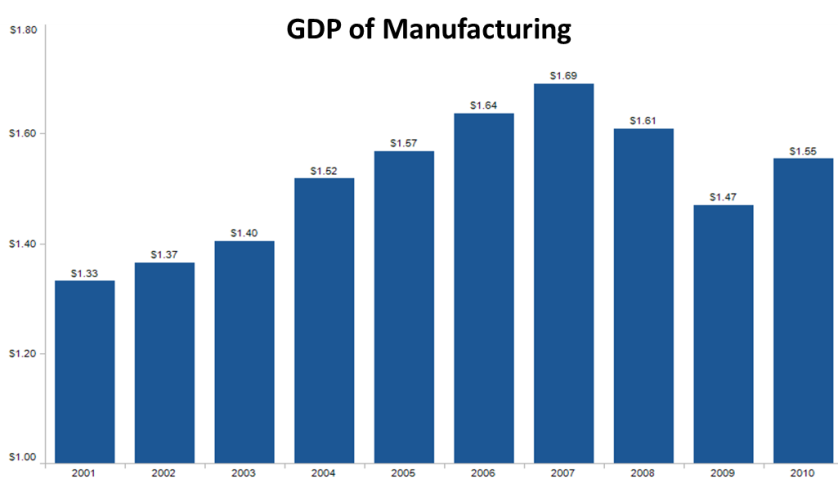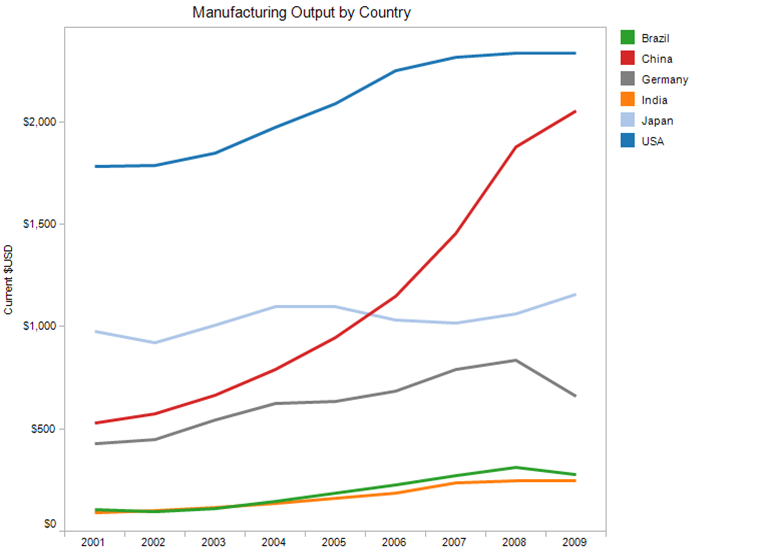Manufacturing and Trade
 Thursday, October 6, 2011 at 10:42PM |
Thursday, October 6, 2011 at 10:42PM |  9 Comments
9 Comments As we discussed yesterday, China’s manufacturing output is expanding rapidly, much faster than the Chinese economy or Chinese consumer spending. A large percentage of the goods are manufactured for export, with the U.S. being country’s largest export market. China provides aggressive incentives, a fixed, artificially low currency, and an appealing cost structure for export focused manufacturing firms. And it’s working, the U.S. trade deficit with China rose from $83 billion in 2000 to $273 billion in 2010. China now accounts for 43% of the country’s trade deficit and has replaced petroleum (with a trade deficit of $270 billion in 2010) as the largest factor in the U.S. trade deficit. This growing trade deficit is certainly a contributing factor in U.S. manufacturing’s reduced growth.
Of additional concern is the destination of the U.S. strong export markets, which are heavily skewed to NAFTA and Europe. Growth is projected to decline in Europe and be quite modest in Canada and Mexico. US exports continue to increase to high growth developing markets, but leveling the playing field is important to replace the growth developed nations once provided.

Even with these strong headwinds, manufacturing GDP continues to grow in the United States, although quite modestly. The Real GDP of Manufacturing (GDP adjusted for inflation) expanded at a compound annual growth rate of 1.1% in the U.S. from 2000 to 2010, to $1.55 trillion. In the last decade the sector expanded by $157 billion.
The numbers mask bright spots, and the figures will surprise some. California, long derided as too expensive for manufacturers, not only retained the top spot for manufacturing but the sector grew strongly. California increased the state’s share of U.S. manufacturing GDP substantially. California, Texas, and Oregon accounted for 89% of growth in U.S. manufacturing from 2000 to 2010.
Less positively, manufacturing is recovering from the recession at a much slower pace than the overall economy. While total GDP recovered to 2007 levels by last year, manufacturing remains 8% below 2007. We’ll dig into some of the interesting state and metro numbers in coming days.



